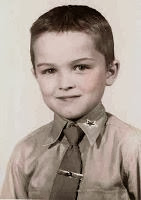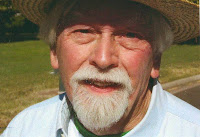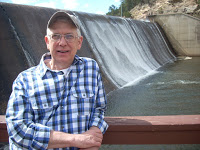While I was under 6-years old, I enjoyed playing with both boys and girls whenever they were around. I was not particular as to the items we played with either. If I was at my house, we played with my toys and if at another’s home, we played with their toys, which would include dolls if the playmate was a girl.
Somewhere between 3 and 4-years old, one of the girl playmates and I played doctor and we both learned the difference between girls and boys. Of course we got caught, but the visual images could not be erased.
As I aged to 6-years old and above, I gravitated to playing with boys only as the girls suddenly had cooties. I gave up playing with dolls and chose to play more active games like cowboys and Indians or war in an obvious imitation of the movies on television. For some reason, I never wanted to play Peter Pan after I saw the Disney animated feature. Perhaps I did want too, but my other playmates thought playing it was too sissy like.
At age 9 ¾ (not to be confused with platform 9 ¾ in the Kings Cross station), another boy and I fondled each other two nights in a row. Up until then, I never desired to see another person naked, but from those two days forward, I wanted to see other boys’ genitals. I had no desire to see girls’ private areas because I had learned playing doctor that girls have nothing to play with down there whereas, all boys have a built-in toy.
I experienced both oral and anal sex at age 10, learned about masturbation and had my first orgasm at age 11. At 11 I also noticed that I was attracted to some boys but not others. Since, I was still in the girls-have-cooties frame of mind, I thought nothing of it. However, as I continued to age, I became increasingly aware that my schoolmates no longer believed in females having cooties. That is when I began to feel different because I was not attracted to girls, only boys. I didn’t dislike girls and had several classmates that I got along with really well. If the opportunity had presented itself, I would have willingly gone to bed with them. But no such opportunity occurred and I became more and more confused and worried. I kept telling myself that I would probably “grow out of” my interest in males and I accepted that and internalized it for years.
I remained hopeful until 2010, when I finally accepted that I was never going to change and I was, in fact, gay. But now I am confused again.
Based upon my life experience growing up, I believe that children about 5 or 6 began to prefer being around members of their own gender. It is just my opinion as I have never read anything about child development in that context. It is just a self-declared fact I “made up” based upon my observations. So, why am I confused now?
I have recently watched several “coming out” stories that pre-teen and young teens have posted on YouTube. Most of them parallel my experience at that age except for one major difference. In most cases the boys state that they knew they were different at young ages. I didn’t know at that age, so how can they know? Is my so called natural-preference-for-one’s-own-gender-when-young theory real or is it just a desire to play active “boy games” and not passive doll games? Is it really a sexual attraction these video coming out story boys feel or just a non-sexual desire to be with and do boy things that they are misinterpreting as evidence or proof they are gay? Are they, in fact, in the early stages of puberty (as I was) at ever increasingly younger ages and these desires really are “sexual” in nature or just curiosity?
I just don’t know the answer to my questions. Until some straight boys of the same ages tell their stories on how they came out as heterosexual, there is nothing to compare the experiences of the two groups. So, I’ll just accept that I am going to be confused about these questions and probably something else as well for the foreseeable future.
© 21 December 2015
About the Author
I was born in June of 1948 in Los Angeles, living first in Lawndale and then in Redondo Beach. Just prior to turning 8 years old in 1956, I began living with my grandparents on their farm in Isanti County, Minnesota for two years during which time my parents divorced.
When united with my mother and stepfather two years later in 1958, I lived first at Emerald Bay and then at South Lake Tahoe, California, graduating from South Tahoe High School in 1966. After three tours of duty with the Air Force, I moved to Denver, Colorado where I lived with my wife and four children until her passing away from complications of breast cancer four days after the 9-11 terrorist attack.
I came out as a gay man in the summer of 2010. I find writing these memories to be therapeutic.
My story blog is TheTahoeBoy.Blogspot.com


